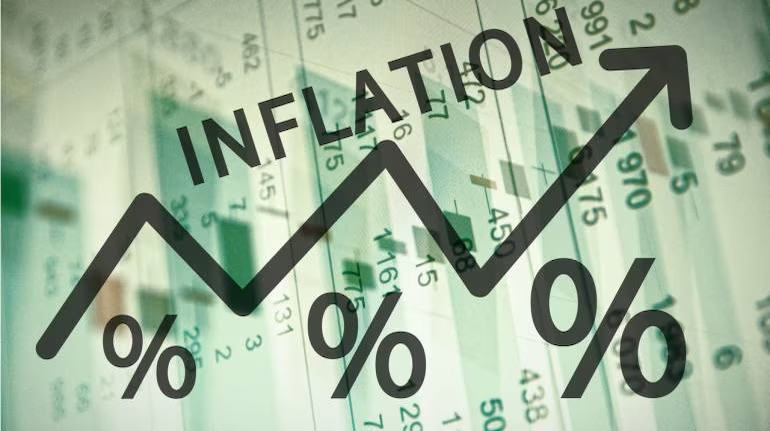In early 2024, the U.S. consumer price index saw its largest annual increase in decades, sending a ripple effect across global markets. For many investors, the word “inflation” brings a sense of uncertainty. It’s a term often mentioned in financial news, but its direct impact on your stock portfolio can feel complicated. Understanding how inflation works is the first step toward making smarter investment decisions and protecting your wealth.
This guide will break down what inflation is, how it influences the stock market, and what strategies you can use to navigate its effects. By the end, you’ll have a clearer picture of how to position your portfolio during periods of rising prices and turn potential challenges into opportunities.
What Is Inflation?
At its core, inflation is the rate at which the general level of prices for goods and services is rising, and subsequently, purchasing power is falling. In simple terms, your dollar buys less today than it did yesterday. If you’ve ever noticed the cost of your weekly groceries creeping up, you’ve seen inflation in action.
Several factors can cause inflation:
- Increased Demand (Demand-Pull Inflation): When consumer demand for goods and services outstrips supply, prices rise. This often happens in a strong economy where people have more money to spend.
- Supply Chain Issues (Cost-Push Inflation): When the cost to produce goods increases, businesses often pass those costs on to consumers. This can be due to rising raw material prices, increased labor costs, or disruptions in the supply chain.
- Built-in Inflation: As prices rise, workers may demand higher wages to keep up with the cost of living. This can lead to a cycle where higher wages lead to higher prices, which in turn leads to demands for even higher wages.
To measure inflation, economists use several key indicators. The most common is the Consumer Price Index (CPI), which tracks the average change over time in the prices paid by urban consumers for a market basket of consumer goods and services. Another is the Producer Price Index (PPI), which measures the average change in selling prices received by domestic producers for their output.
How Inflation Impacts the Stock Market
Inflation is a double-edged sword for the stock market. Its impact can be positive or negative depending on the industry, the company, and the broader economic environment.
Positive Impacts
While often viewed as a negative force, some areas of the market can perform well during inflationary periods.
- Companies with Pricing Power: Businesses that can raise prices without losing customers are well-positioned to thrive. These are often companies with strong brand loyalty, unique products, or dominant market positions. They can pass on higher costs to consumers, protecting their profit margins. Think of essential goods and services that people will buy regardless of price increases.
- Sectors that Benefit from Inflation: Certain sectors naturally benefit from rising prices. The commodities sector, which includes oil, gas, and precious metals, often sees prices soar during inflation. Similarly, real estate can be a good hedge, as property values and rental income tend to rise with inflation.
Negative Impacts
For many companies, inflation creates significant headwinds that can hurt profitability and stock prices.
- Erosion of Purchasing Power: As prices rise, consumers have less disposable income. This leads to a decrease in spending on non-essential items, which can hurt the revenues of companies in the consumer discretionary sector. When people are spending more on gas and groceries, they have less for new gadgets or vacations.
- Increased Borrowing Costs: To combat inflation, central banks often raise interest rates. This makes it more expensive for companies to borrow money for expansion, research, or even day-to-day operations. Higher debt costs can eat into profits and reduce a company’s attractiveness to investors.
- Potential for Stagflation: One of the biggest fears for investors is stagflation—a toxic combination of slow economic growth, high unemployment, and high inflation. In this environment, corporate earnings decline while costs continue to rise, creating a challenging landscape for most stocks.
Strategies for Investors During Inflation
Navigating an inflationary environment requires a thoughtful and proactive approach. Rather than panicking, investors can adopt several strategies to protect and even grow their portfolios.
Diversification
Diversification is always important, but it becomes crucial during times of economic uncertainty. By spreading your investments across different asset classes—such as stocks, bonds, and real assets—you can mitigate the risk of any single asset performing poorly. A well-diversified portfolio can help smooth out returns and protect against market volatility.
Inflation-Protected Securities
For a more direct hedge against inflation, investors can turn to Treasury Inflation-Protected Securities (TIPS). These are government bonds whose principal value adjusts with inflation. When inflation rises, the value of your TIPS increases, providing a built-in defense against eroding purchasing power.
Value Investing
Value investing involves finding companies that are trading for less than their intrinsic worth. During inflationary times, this strategy can be particularly effective. Focus on companies with solid fundamentals, such as strong balance sheets, consistent cash flow, and low debt. These businesses are often more resilient and better equipped to weather economic downturns.
Real Assets
Tangible assets can be a reliable store of value when the purchasing power of currency is declining. Consider investments in real estate, either through direct ownership or Real Estate Investment Trusts (REITs). Commodities like gold and other precious metals have also historically performed well during periods of high inflation, as investors flock to them as a safe haven.
Frequently Asked Questions (FAQ)
Q: What is the ideal inflation rate for a healthy economy?
A: Most economists, including those at the U.S. Federal Reserve, consider a target inflation rate of around 2% to be ideal. A small amount of inflation is seen as a sign of a healthy, growing economy. It encourages spending and investment, as consumers and businesses are motivated to buy now before prices rise further. Zero or negative inflation (deflation) can be more dangerous, as it often leads to reduced spending and economic stagnation.
Q: How do central banks use interest rates to control inflation?
A: Central banks, like the Federal Reserve, use interest rates as their primary tool to manage inflation. When inflation is too high, they raise interest rates. This makes borrowing more expensive for both consumers and businesses, which tends to cool down spending and slow economic growth. Conversely, when inflation is too low or the economy is weak, they lower interest rates to encourage borrowing and spending, stimulating economic activity.
Q: What are some early warning signs of rising inflation?
A: Several indicators can signal that inflation is on the rise. These include a rapidly increasing Producer Price Index (PPI), which suggests that businesses are facing higher costs that they may soon pass on to consumers. Other signs are rising commodity prices (like oil and lumber), supply chain bottlenecks, and a tight labor market that pushes wages higher. Keeping an eye on these economic indicators can help you anticipate inflationary pressures.
Stay Informed and Stay Prepared
Inflation’s impact on the stock market is complex, with both winners and losers. By understanding the underlying mechanics, you can move beyond the headlines and make informed decisions for your portfolio. The key is to remain proactive, not reactive. A strategy built on diversification, a focus on quality companies, and an allocation to inflation-hedging assets can help you navigate the challenges and seize the opportunities that arise.
As always, the economic landscape is constantly changing. Stay informed, review your investment strategy regularly, and consider consulting with a financial advisor to ensure your portfolio is aligned with your long-term goals.

